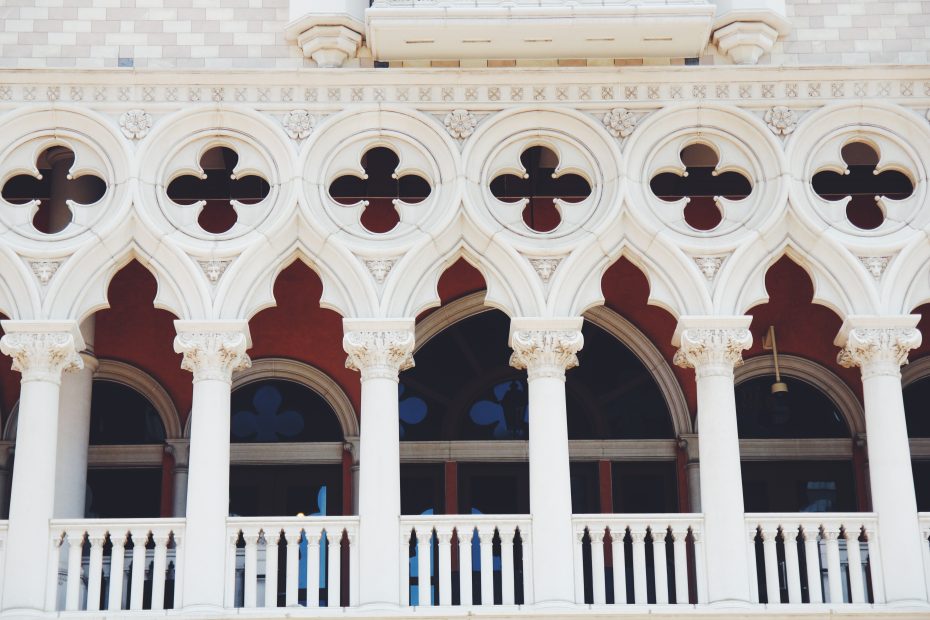Table of Contents
Introduction
Nestled on the southeastern coast of China, Macau is a small peninsula and archipelago that packs a big punch when it comes to architecture. With over 400 years of Portuguese colonial rule, Macau has developed into a unique blend of Chinese and Portuguese cultures. This fusion is beautifully reflected in the city’s built environment, where Chinese temples sit alongside Baroque churches, and Art Deco buildings neighbor Portuguese pousadas.
Macau’s architectural tapestry weaves together motifs from both East and West, creating anurban landscape quite unlike any other. Let’s take a closer look at some of the key architectural influences that shape the city.
Chinese Influences
As a Special Administrative Region of China, it’s not surprising that Macau bears the mark of traditional Chinese architecture. Beautifully ornamented Chinese temples dot the landscape, infusing it with the incense and color of ancient rituals.
The A-Ma Temple is one of the most striking examples. Dedicated to the Chinese sea goddess Mazu, it was built in 1488 and lends its name to the city itself. Another gem is the Lin Fung Miu, or Lotus Flower Temple, renowned for its lotus-shaped doorway decorated in colored glazed tiles.
In addition to temples, Chinese-style gardens bring tranquility to urban areas. The Lou Lim Ioc Garden offers a peaceful retreat with pavilions, ponds, and rockery. Macau also has some fortune houses, where prosperous Chinese merchants once lived.
Portuguese Influences
As a former Portuguese colony, European influences naturally abound. One of the most recognizable landmarks is the pastel-hued Ruins of St. Paul’s. This 17th century Catholic church now consists of a striking stone facade and grand staircase, having survived a fire in 1835.
Baroque churches from the colonial era, such as St. Joseph’s Seminary and the Church of Saint Augustine, add elegant white-washed facades and decorative detailing to the cityscape.
The Portuguese also built elegant pousadas, or historic inns, that now function as museums and cultural centers. The Moorish Barracks and the Mandarin’s House both exemplify this style.
Massive forts and fortresses are further vestiges of Portuguese military architecture, such as Guia Fortress sitting atop Guia Hill. The towering Monte Fort also defended the city from pirates and invaders.
Notable Examples
Some of Macau’s most interesting buildings creatively blend Chinese and Portuguese elements. Senado Square lies at the heart of this fusion. Its distinctive paved mosaic floor depicts Neoclassical Portuguese patterns, while the surrounding buildings flaunt Chinese-style roofs and shutters.
Equally striking is the Sir Robert Ho Tung Library. Built in 1894 as the residence of a Chinese aristocrat, it fuses a Chinese gray-brick exterior with European Neo-Classical architecture inside.
The Macau Museum of Art elegantly combines a three-story Chinese-style facade with modern glass interiors. This synergy beautifully encapsulates Macau’s hybrid cultural identity.
Contemporary Architecture
Alongside its historic gems, Macau now dazzles with audacious contemporary buildings. The city’s luxury casino boom has ushered in show-stopping resorts like the Wynn Palace, an ornate bronze edifice with octagonal towers.
The Macau Tower rises 338 meters as one of the world’s tallest buildings. And the MGM Cotai hotel was designed by star architect Zaha Hadid, with futuristic curved forms.
While catering to modern tastes, new structures continue interacting with old. The Grand Lisboa hotel was designed to resemble a lotus flower alongside the 1960’s original Lisboa. Meanwhile, walking trails connect historical sites into a cohesive urban fabric.
Preserving Cultural Heritage
In 2005, UNESCO designated the historic center of Macau as a World Heritage Site. This spurred significant restoration to preserve its unique East-meets-West character.
Painstaking work has revitalized treasures like the ancient Section of the Protestant Cemetery and the iconic Leal Senado Building. Ongoing partnerships with China aim to respect Macau’s multicultural past while developing for the future.
Sensitive urban planning will be key to safeguarding heritage as the city continues evolving. But for now, Macau’s architectural fusion remains dazzlingly intact for visitors to savor.
Conclusion
Macau’s buildings provide a mosaic of Chinese and Portuguese heritage, encapsulating centuries of intercultural interchange. From the mystical aura of incense-wreathed temples to flamboyant Baroque churches, the architecture tells a vivid story. By preserving this fusion, Macau retains its soul while welcoming the future. The city’s layered landscape is an open-air museum for appreciating an architectural tapestry found nowhere else in the world.
FAQs
What are some key examples of Chinese architecture in Macau?
Some important Chinese structures include A-Ma Temple, Lin Fung Miu Temple, Lou Lim Ioc Garden, and various fortune houses.
What Portuguese architectural influences shaped Macau?
Macau exhibits many Baroque churches, historic inns called pousadas, and forts/fortresses from the Portuguese colonial era.
What buildings showcase a blend of Chinese and Portuguese styles?
The Senado Square, Sir Robert Ho Tung Library, and Macau Museum of Art expertly combine both cultural motifs.
How has Macau balanced preservation with contemporary development?
Careful urban planning and restoration efforts aim to safeguard heritage alongside new luxury casinos and hotels.
Why does Macau’s architecture make it a fascinating destination?
The unique fusion of Chinese and Portuguese architecture over centuries creates an incredible intercultural tapestry seen nowhere else.
